Related Research Articles

Cloning is the process of producing individual organisms with identical or virtually identical DNA, either by natural or artificial means. In nature, some organisms produce clones through asexual reproduction. In the field of biotechnology, cloning is the process of creating cloned organisms (copies) of cells and of DNA fragments.
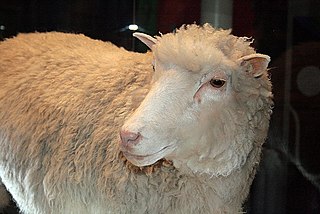
Dolly was a female Finnish Dorset sheep and the first mammal cloned from an adult somatic cell. She was cloned by associates of the Roslin Institute in Scotland, using the process of nuclear transfer from a cell taken from a mammary gland. Her cloning proved that a cloned organism could be produced from a mature cell from a specific body part. Contrary to popular belief, she was not the first animal to be cloned.
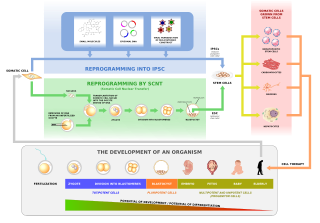
Human cloning is the creation of a genetically identical copy of a human. The term is generally used to refer to artificial human cloning, which is the reproduction of human cells and tissue. It does not refer to the natural conception and delivery of identical twins. The possibility of human cloning has raised controversies. These ethical concerns have prompted several nations to pass laws regarding human cloning.
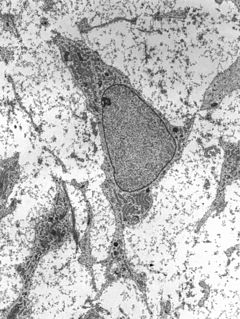
In multicellular organisms, stem cells are undifferentiated or partially differentiated cells that can differentiate into various types of cells and proliferate indefinitely to produce more of the same stem cell. They are the earliest type of cell in a cell lineage. They are found in both embryonic and adult organisms, but they have slightly different properties in each. They are usually distinguished from progenitor cells, which cannot divide indefinitely, and precursor or blast cells, which are usually committed to differentiating into one cell type.
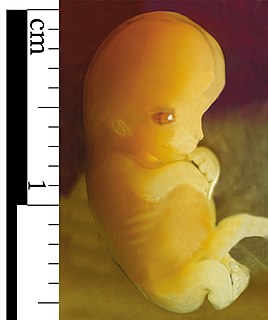
An embryo is the early stage of development of a multicellular organism. In general, in organisms that reproduce sexually, embryonic development is the part of the life cycle that begins just after fertilization and continues through the formation of body structures, such as tissues and organs. Each embryo starts development as a zygote, a single cell resulting from the fusion of gametes. In the first stages of embryonic development, a single-celled zygote undergoes many rapid cell divisions, called cleavage, to form a blastula, which looks similar to a ball of cells. Next, the cells in a blastula-stage embryo start rearranging themselves into layers in a process called gastrulation. These layers will each give rise to different parts of the developing multicellular organism, such as the nervous system, connective tissue, and organs.

In genetics and developmental biology, somatic cell nuclear transfer (SCNT) is a laboratory strategy for creating a viable embryo from a body cell and an egg cell. The technique consists of taking an enucleated oocyte and implanting a donor nucleus from a somatic (body) cell. It is used in both therapeutic and reproductive cloning. In 1996, Dolly the sheep became famous for being the first successful case of the reproductive cloning of a mammal:(. In January 2018, a team of scientists in Shanghai announced the successful cloning of two female crab-eating macaques from foetal nuclei.

Embryonic stem cells are pluripotent stem cells derived from the inner cell mass of a blastocyst, an early-stage pre-implantation embryo. Human embryos reach the blastocyst stage 4–5 days post fertilization, at which time they consist of 50–150 cells. Isolating the embryoblast, or inner cell mass (ICM) results in destruction of the blastocyst, a process which raises ethical issues, including whether or not embryos at the pre-implantation stage have the same moral considerations as embryos in the post-implantation stage of development.

Nuclear transfer is a form of cloning. The steps involve removing the DNA from an oocyte, and injecting the nucleus which contains the DNA to be cloned. In rare instances, the newly constructed cell will divide normally, replicating the new DNA while remaining in a pluripotent state. If the cloned cells are placed in the uterus of a female mammal, a cloned organism develops to term in rare instances. This is how Dolly the Sheep and many other species were cloned. Cows are commonly cloned to select those that have the best milk production. On 24 January 2018, two monkey clones were reported to have been created with the technique for the first time.
Polly and Molly, two ewes, were the first mammals to have been successfully cloned from an adult somatic cell and to be transgenic animals at the same time. This is not to be confused with Dolly the Sheep, the first animal to be successfully cloned from an adult somatic cell where there wasn’t modification carried out on the adult donor nucleus. Polly and Molly, like Dolly the Sheep, were cloned at the Roslin Institute in Edinburgh, Scotland.
In biology, reprogramming refers to erasure and remodeling of epigenetic marks, such as DNA methylation, during mammalian development or in cell culture. Such control is also often associated with alternative covalent modifications of histones.
The stem cell controversy is the consideration of the ethics of research involving the development and use of human embryos. Most commonly, this controversy focuses on embryonic stem cells. Not all stem cell research involves human embryos. For example, adult stem cells, amniotic stem cells, and induced pluripotent stem cells do not involve creating, using, or destroying human embryos, and thus are minimally, if at all, controversial. Many less controversial sources of acquiring stem cells include using cells from the umbilical cord, breast milk, and bone marrow, which are not pluripotent.
Megan and Morag, two domestic sheep, were the first mammals to have been successfully cloned from differentiated cells. They are not to be confused with Dolly the sheep which was the first animal to be successfully cloned from an adult somatic cell or Polly the sheep which was the first cloned and transgenic animal. Megan and Morag, like Dolly and Polly, were cloned at the Roslin Institute in Edinburgh, Scotland in 1995.
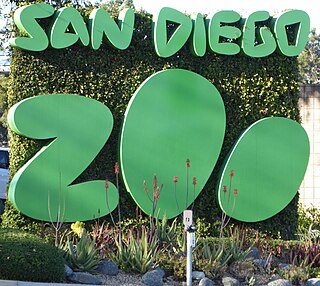
A frozen zoo is a storage facility in which genetic materials taken from animals are stored at very low temperatures (−196 °C) in tanks of liquid nitrogen. Material preserved in this way can be stored indefinitely and used for artificial insemination, in vitro fertilisation, embryo transfer, and cloning. Some facilities also collect and cryopreserve plant material.
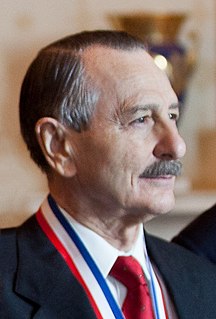
Ralph Lawrence Brinster is an American geneticist, National Medal of Science laureate, and Richard King Mellon Professor of Reproductive Physiology at the School of Veterinary Medicine, University of Pennsylvania.

Shinya Yamanaka is a Japanese stem cell researcher, winner of the Nobel Prize. He serves as the director of Center for iPS Cell Research and Application and a professor at the Institute for Frontier Medical Sciences at Kyoto University; as a senior investigator at the UCSF-affiliated Gladstone Institutes in San Francisco, California; and as a professor of anatomy at University of California, San Francisco (UCSF). Yamanaka is also a past president of the International Society for Stem Cell Research (ISSCR).
Samuel H. Wood is a scientist and fertility specialist. In 2008, he became the first man to clone himself, donating his own DNA via somatic cell nuclear transfer (SCNT) to produce mature human embryos that were his clones.

Keith Henry Stockman Campbell was a British biologist who was a member of the team that in 1996 first cloned a mammal, a Finnish Dorset lamb named Dolly, from fully differentiated adult mammary cells. He was Professor of Animal Development at the University of Nottingham.
Embryomics is the identification, characterization and study of the diverse cell types which arise during embryogenesis, especially as this relates to the location and developmental history of cells in the embryo. Cell type may be determined according to several criteria: location in the developing embryo, gene expression as indicated by protein and nucleic acid markers and surface antigens, and also position on the embryogenic tree.

Cell potency is a cell's ability to differentiate into other cell types. The more cell types a cell can differentiate into, the greater its potency. Potency is also described as the gene activation potential within a cell, which like a continuum, begins with totipotency to designate a cell with the most differentiation potential, pluripotency, multipotency, oligopotency, and finally unipotency.

Zhong Zhong and Hua Hua are a pair of identical crab-eating macaques that were created through somatic cell nuclear transfer (SCNT), the same cloning technique that produced Dolly the sheep in 1996. They are the first cloned primates produced by this technique. Unlike previous attempts to clone monkeys, the donated nuclei came from fetal cells, not embryonic cells. The primates were born from two independent surrogate pregnancies at the Institute of Neuroscience of the Chinese Academy of Sciences in Shanghai.
References
- ↑ Ricks, Delthia Scientists make human embryo clone Archived 2008-01-22 at the Wayback Machine newsday.com
- ↑ Prinewswire Stemagen First to Create Cloned Human Embryos From Adult Cells Jan. 17, 2008 Genetic Engineering & Biotechnology News
- 1 2 Somers, Terri Biotech Stemagen fused skin and egg to clone embryo The San Diego Union-Tribune, January 18, 2008
- ↑ Weiss, Rick Mature Human Embryos Created From Adult Skin Cells Washingtonpost.com
- ↑ French, Andrew J., Cathrine A. Adams et al. Development of human cloned blastocysts following somatic cell nuclear transfer (SCNT) with adult fibroblasts Stem Cells published by AlphaMed Press 2008 Feb;26(2):485-93. Epub 2008 January 17, 2008. doi : 10.1634/stemcells.2007-0252